Text
Two newly discovered photographs of Grand Duchesses Olga and Tatiana in 1913
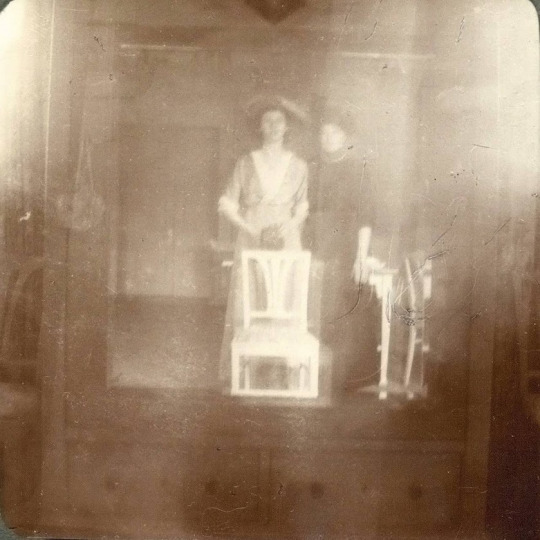
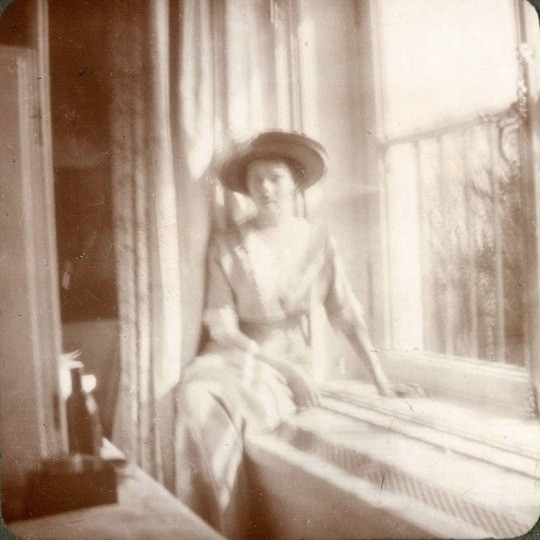
Photo 1: Tatiana standing on the left, Olga on the right taking a mirror selfie in their mirrored wardrobe (a new photo to add to the collection of Romanov selfies!)
Photo 2: Tatiana sitting by the balcony window, Alexander Palace.
These photos were taken the same day as these already known photographs, completing the scene. Spring, 1913.



As always, these new findings are from Ilya, @ LastRomanovs on flickr. These discoveries are thanks to his amazing and tireless effort to digitise all of the Romanov's albums in high quality for viewers to view online.
Source: LastRomanovs, GARF f.611 op.1 d.98 pp. 3-8
#Olga Nikolaevna#Tatiana Nikolaevna#big pair#new photos#rares#Olga Romanov#Tatiana Romanov#Alexander Palace#1913#selfies#Russian history#Romanov sisters
19 notes
·
View notes
Text
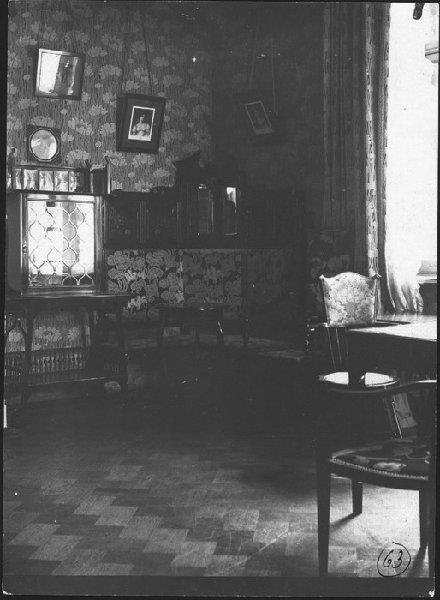
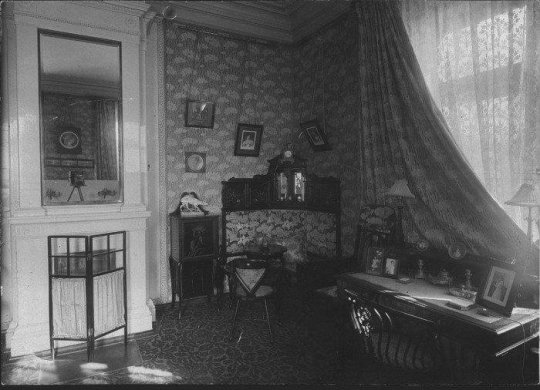


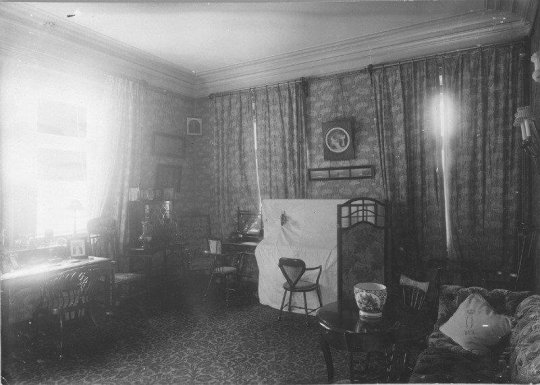
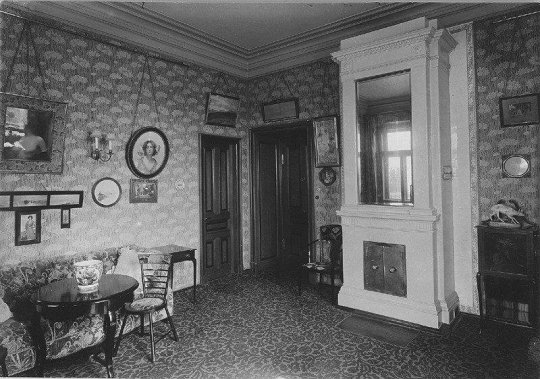
The Reception Room of Grand Duchesses Olga and Tatiana at the Lower Dacha in Peterhof
The rooms had a diverse range of colors to create cheerful, upbeat mood. All the children's rooms were decorated with porcelain and glass products: decorative vases, dishes, numerous animal figurines made by Russian and Danish masters of the late XIX-early XX centuries, the walls were decorated with paintings and watercolors by popular authors at that time, but most often with icons and photographs.
You can see a series of photos of Grand Duchess Olga Nikolaevna taken here in 1902 (x).
37 notes
·
View notes
Text
as a historian (and artist, but that's a whole other conversation), I'm growing increasingly concerned about AI. It has got to the point where people cannot tell the difference between reality and AI images, and every time a machine is fed with an image or an instruction to turn a historical figure into an AI image, it gets better at it.
I'm super concerned that historical images - completely computer made, fake, faux - will soon be mistaken for real history and historical photographs. It's incredibly dangerous.
If AI is so advanced that the public cannot recognise the difference between a real photograph of a celebrity and a computer image, what hope do we have for people being able to tell apart real historical sources from nonsense fabrications?
14 notes
·
View notes
Text
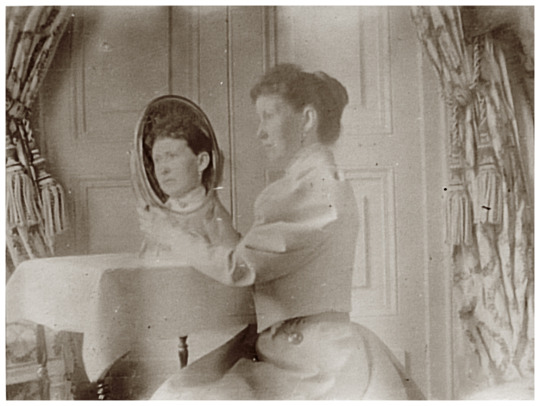
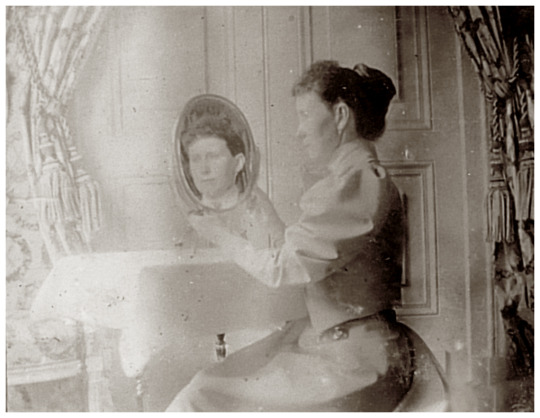
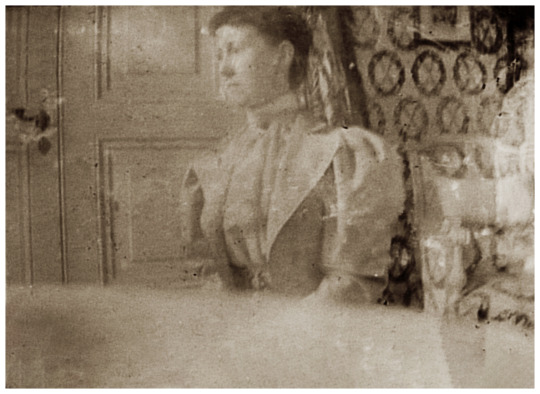
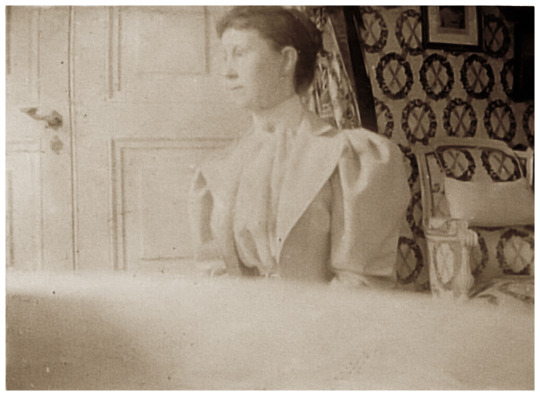
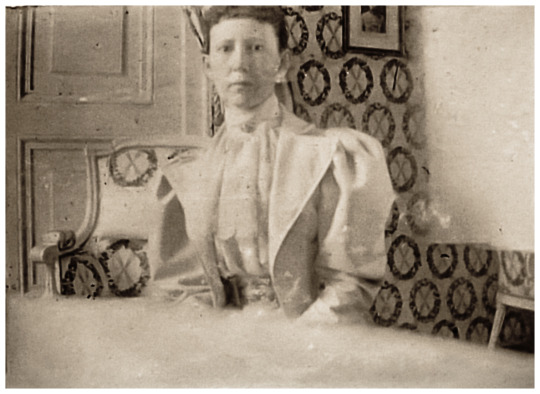


Ekaterina ("Trina") Adolfovna Schneider photographed in the imperial bedroom at the Alexander Palace, c. 1896-1897. Schneider was a German tutor who taught Empress Alexandra Feodorovna the Russian language before her marriage to Tsar Nicholas II of Russia. Later, she became Alexandra's lectrice (reader) AND often acted as chaperone to Grand Duchesses Olga, Tatiana, Maria and Anastasia.
29 notes
·
View notes
Text
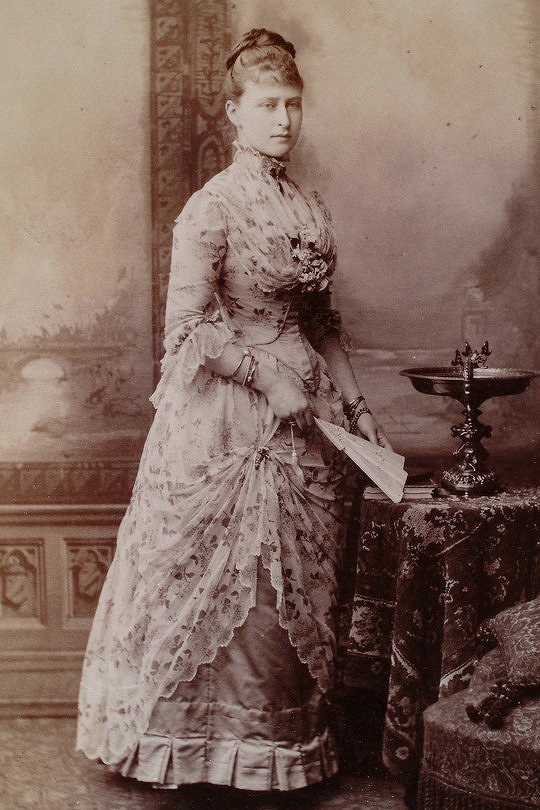

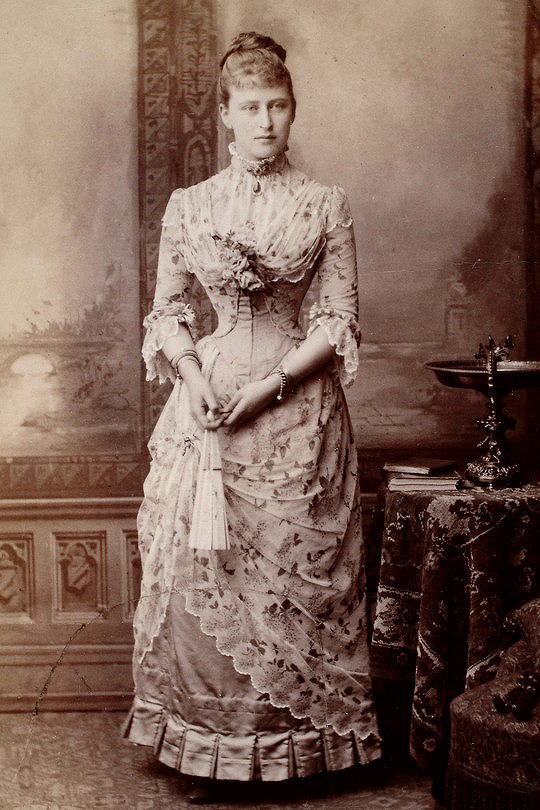
Grand Duchess Elizabeth Feodorovna, 1887.
'She had besides a special talent for wearing her clothes, in a way quite her own. Of course everything suited her, for she was tall, slim and incredibly graceful, and no blush rose could have competed with her complexion. There was also something of a lily about her; her purity was absolute ; one could never take one’s eyes off her, and when parting from her in the evening one longed for the hour when one would behold her again next day.' Queen Marie of Romania
115 notes
·
View notes
Text
Hello! Thanks for tagging me - I love this photo!
The original photograph can be found in one of Anastasia's 1915-1916 photograph albums. It depicts the "snow tower" that the girls often wrote about in their diaries.
The boy with them is Kolya Vladimirovich Derevenko - the son of Alexei's physician, Dr. Vladimir Derevenko. Kolya passed away in 1999. He gave this interview about Alexei, in Russian, shortly before his death. Helen Azar has translated it.
Here's another photograph of them from the same day from another one of Anastasia's many albums - you can see that Anastasia has written "Kolya" in Russian :)

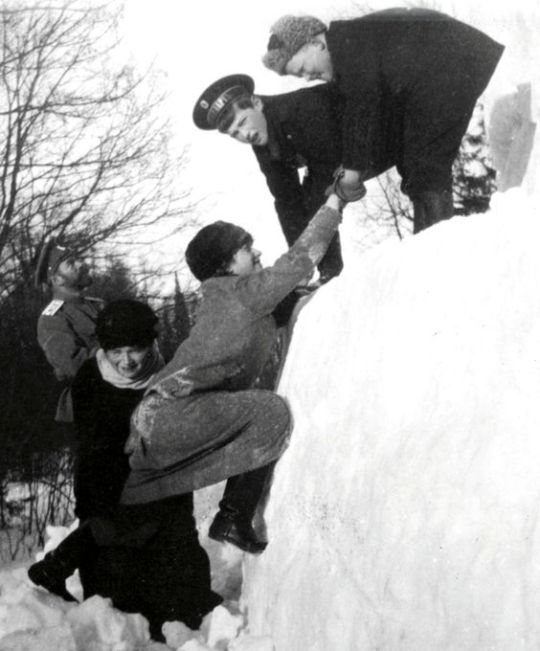
A hilarious photo showing Grand Duchess Anastasia Nikolaevna of Russia climbing a hill made of snow, while her sister, Olga Nikolaevna is pushing her from the back. Her brother, Tsarevich Alexei, looks at the camera while one of his friends is pulling Nastya by the hand. Their father, Tsar Nicholas II, is looking from the side.
p.s. if anyone knows who the boy is pls write in the comments or dm me (@otmaaromanovas maybe you do tho?)
126 notes
·
View notes
Text



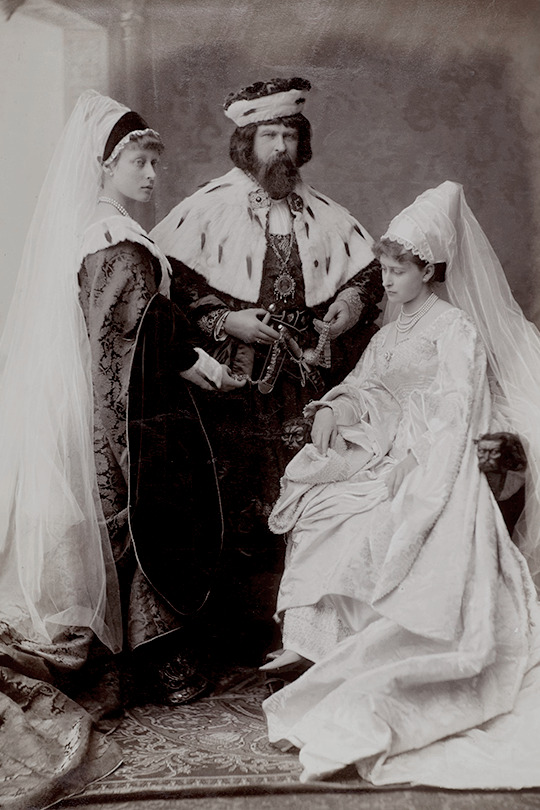
Louis IV Grand Duke of Hesse and by Rhine with his two eldest daughters Princess Victoria and Princess Elizabeth, 1883.
149 notes
·
View notes
Text

Romanov Imperial Family
Russian vintage postcard
#otma#Tatiana Nikolaevna#Anastasia Nikolaevna#Maria Nikolaevna#Olga Nikolaevna#Nicholas II#Alexandra Feodorovna#Alexei Nikolaevich#anti-bolshevik postcards#?
72 notes
·
View notes
Text
I'm absolutely delighted to say that my OTMA research project has been accepted at an international conference! Which means I get to present my Romanov research to a panel of over five continents... actually quite nervous now but so so so happy that I get to share with fellow historians and academics!!
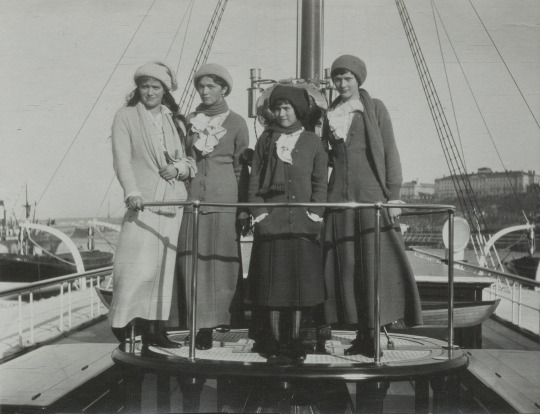
39 notes
·
View notes
Text
I think that people often forget that Alexandra suffered from multiple chronic pain conditions, and was disabled. Chronic pain is exhausting, especially without modern medicine and treatments. She spent a great deal of time indoors, unable to move from her rooms, and used a wheelchair. Expecting her to have partaken in manual labour is bizarre and speaks to the sexism and ableism that still pervade this topic of history.
Whatever you think of Alexandra's personality/actions, saying that she was 'stuck up' or 'arrogant' for being physically unable to chop wood is ridiculous. She was disabled.
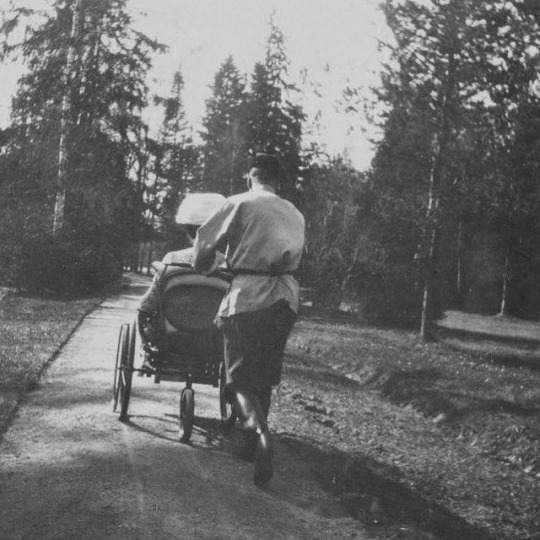


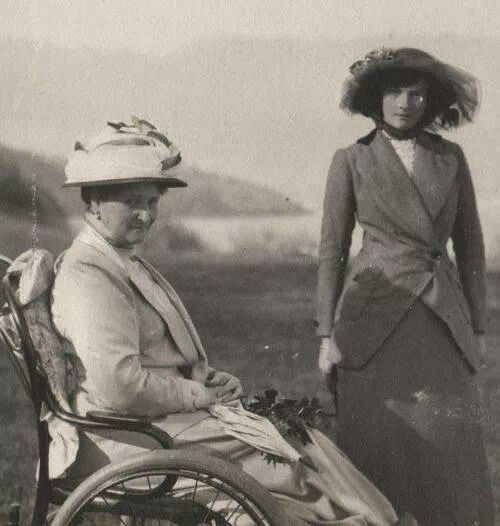
#Alexandra Feodorovna#disability history#disabled historian#I'm TIRED!!#image desc in alt text#cw ableism
55 notes
·
View notes
Text

OTMA photographed in Tsarskoe Selo in June, 1917.
Friday, June 22nd - As the Grand-Duchesses were losing all their hair as the result of their illness (note: they came down with the measles in early 1917), their heads have been shaved. When they go out in the park they wear scarves arranged so as to conceal the fact. just as I was going to take their photographs, at a sign from Olga Nicolaievna they all suddenly removed their headdress. I protested, but they insisted, much amused at the idea of seeing themselves photographed like this, and looking forward to seeing the indignant surprise of their parents. Their good spirits reappear from time to time in spite of everything. It is their exuberant youth.
Pierre Gilliard - Thirteen Years at the Russian Court
#otma#Olga Nikolaevna#Tatiana Nikolaevna#Maria Nikolaevna#Anastasia Nikolaevna#dated#June#1917#Pierre Gilliard#sources#captivity#Alexander Palace
22 notes
·
View notes
Text


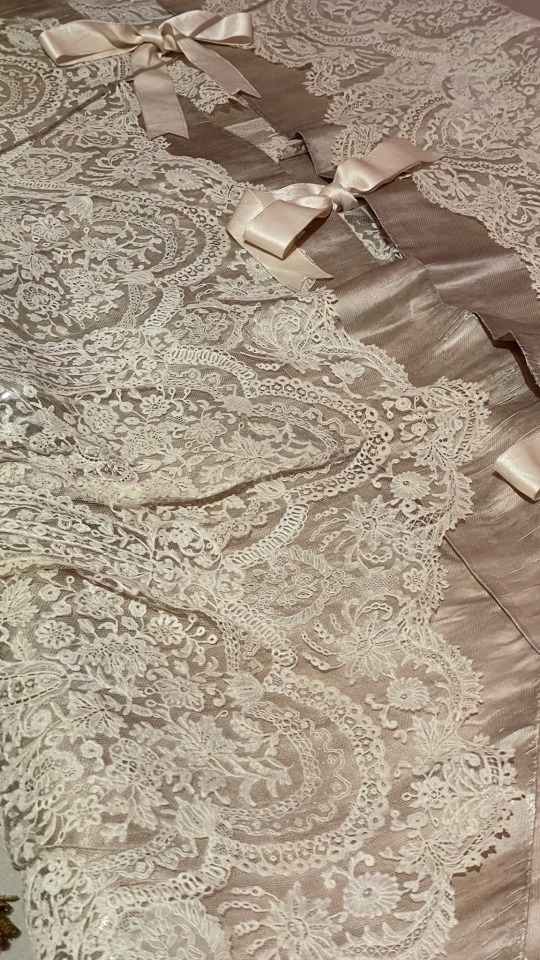
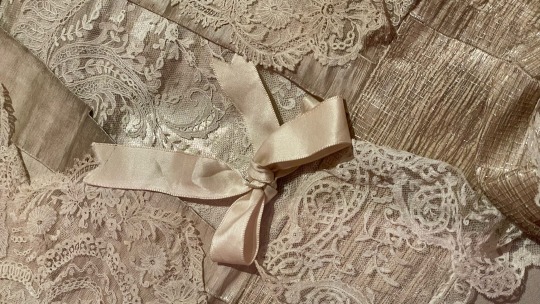
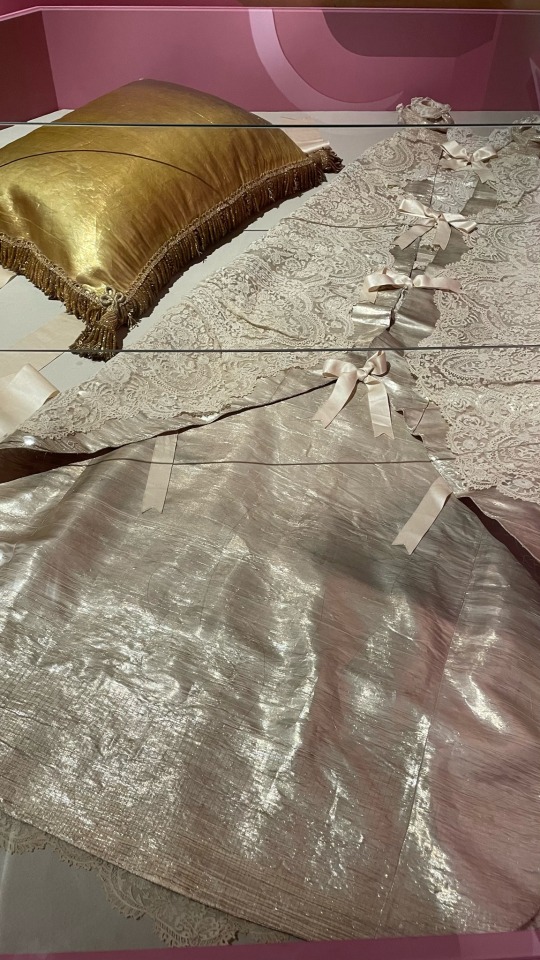

Tsarevich Alexei of Russia’s baptismal gown and pillow.
Russia, Moscow. A. and V. Sapozhnikovs Trade House.
Gown (1895?). Silver edge fabric, lace on silk, hand and machine stitching.
Pillow (1895). Golden edge fabric, gold fringe, gold tassels, satin bands, down feathers, hand and machine stitching.
On 24 August, 1904, the Romanov Dynasty Heir Alexei Romanov, who was born earlier that summer, was christened in the Russian Orthodox tradition in the church of the Grand Peterhof Palace. Tsarevich Alexei had a number of godparents, including Kaiser Wilhelm. His principal godmother was his grandmother Dowager Empress Maria Feodorovna and principal godfather was Grand Duke Alexei Alexandrovich.
As per tradition, the eldest lady-in-waiting of the imperial court, Maria Golitsyna, carried the child in her arms. Maria was already an elderly woman by that time and Empress Alexandra Fedorovna is said to have been fearful that she would drop the long-awaited child.
To avoid this, gold ribbons were sewn to the gold pillow on which the baby was lying. At the same time, the maid-in-waiting's shoes were fitted with rubber non-slip soles.
This occasion was the first time the young Grand Duchesses Olga and Tatiana and their cousin Princess Irina Alexandrovna, were present at an official ceremony.
All the little grand duchesses also had the opportunity to pose for photographs in small Court dresses and kokoshniks (traditional Russian head dresses).
"During the baptism of the baby, there was a wonderful incident that attracted the attention of all those present," wrote one of the prints present. "When the newborn Tsarevich was anointed with holy peace, he raised his hand and stretched out his fingers, as if blessing those present."
From the diary of Tsar Nicholas II:
“11 (24 N.S) August, 1904. A remarkable day of the christening of our dear son. The morning was clear and warm. Until 9 1/2 golden carriages and Platoon Convoy, Hussars and Hetmans stood in front of the house on the road to the sea. At five [minutes] to 10 the procession started. Half an hour later [we] went to the cottage. Saw Mama at Christian’s who just arrived on behalf of Apapa. Went to the Grand Palace with Misha. The christening began at 11 o’cl. Later learned that little Alexei was very calm. Olga, Tatiana, Irina and the other children came out for the first time and excellently withstood the entire length of service. The main recipients were Mama and Uncle Alexei. After obednya [I] received the diplomats, and then had a big breakfast. Returned home only at 3 1/4 and congratulated darling Alix with the christening. The weather turned bad, and it started pouring. Alix saw many people lying down on the sofa. I spent the rest of the day at home. In the evening Militza and Stana sat with us.”
You can learn more about the traditions surrounding the christening of imperial heirs here and read the manifesto of the event here.
53 notes
·
View notes
Text

Portrait of Tsesarevich Alexei Nikolaevich by Pyotr Pershin
This portrait of Tsesarevich and Grand Duke Alexei Nikolaevich on display at the Alexander Palace, is the last portrait of the heir to the Russian throne in his lifetime and the only portrait of Alexei in the collection of the Tsarskoe Selo Museum and Heritage Site.
The portrait was painted by Pyotr Pershin, a Russian portraitist from an old landowner’s family in the Volga region (most likely based on a series of official photos the Tsarevich taken in 1913).
Pershin served as an officer in the Moscow Grenadier Regiment and, for his exceptional artistic abilities, was sent to study at the Imperial Academy of Arts in St. Petersburg. He studied in the battle painting class of Nikolay Samokish, Member of the Imperial Academy of Arts. On the occasion of the 300th anniversary of the House of Romanov he painted a series of 12 historical pieces for the Moscow magazine “Loyalty”, which were published as a separate edition.
In 1914, as World War I broke out, Pershin was assigned to the Stavka (general headquarters) of the Supreme Commander-in-Chief as a battle painter. He toured many sections of the front in a specially designed photography studio on a train. Also, Pyotr Petrovich gave drawing lessons to the heir to the throne.
After the revolution, in 1920, he emigrated from Russia with units of the White Army. From 1925 to 1932 he lived in Spain, where he carried out government artistic commissions. In 1932, Pyotr Petrovich moved to France, where he lived in Grasse until his death. During his emigration the artist painted mainly small watercolors, illustrated the history of Ancient Russia and everyday life of pre-revolutionary Russia. He lived isolated and only communicated with his spiritual father. The artist is buried in the Sainte-Brigitte Cemetery in Grasse.
In 2015, this portrait of the Tsesarevich was accidentally discovered in a cache during a major renovation of one of the Cavalier houses near the Catherine Palace, where the family of the court life-medic Yevgeny Botkin lived. Restoration of the painting revealed barely discernible initials at the bottom of the canvas, which helped establish the artist’s name. During his drawing lessons, which Pershin gave to the heir to the Russian throne in 1914–1916, he probably made some portrait sketches of Alexei Nikolaevich, and later painted a portrait of the Tsesarevich after his own pictures and drawings.
The portrait used to hang in the New Study of Emperor Nicholas II in the Alexander Palace as you can see in older photos here and here, and fortunately it has returned to its original placing.
33 notes
·
View notes
Text

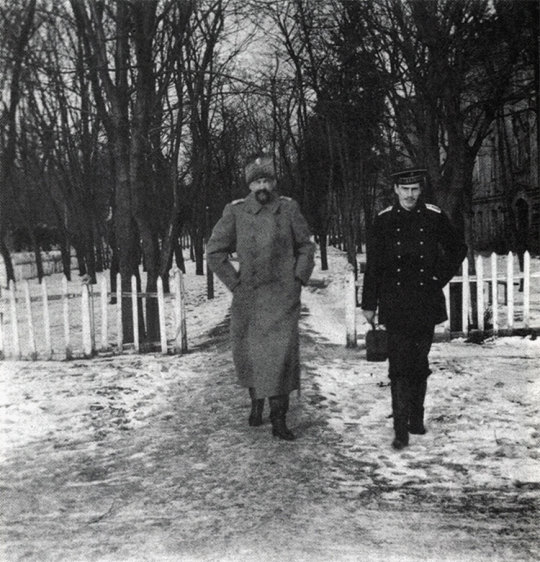
Grand Duke Alexander Mikhailovich with his eldest son, Andrei.
59 notes
·
View notes
Text
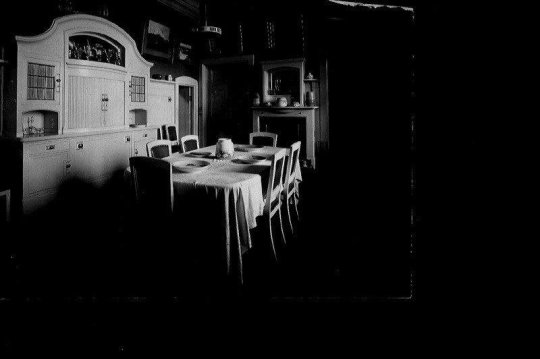
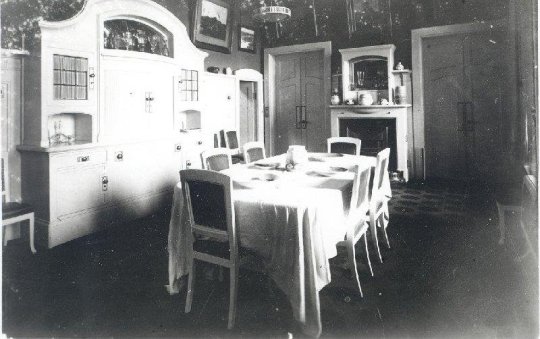
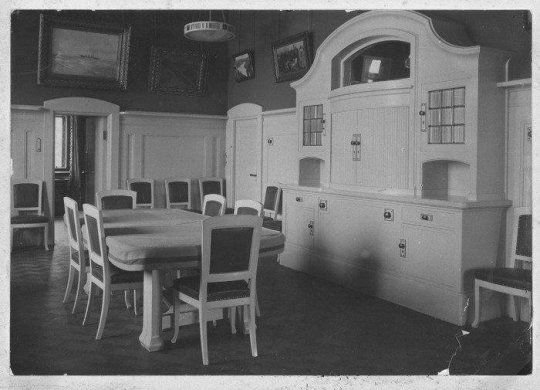
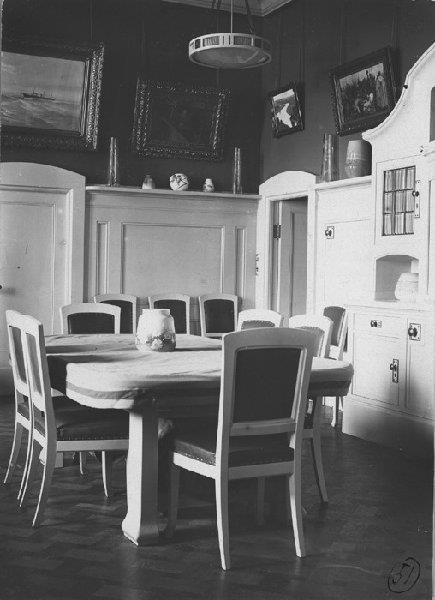

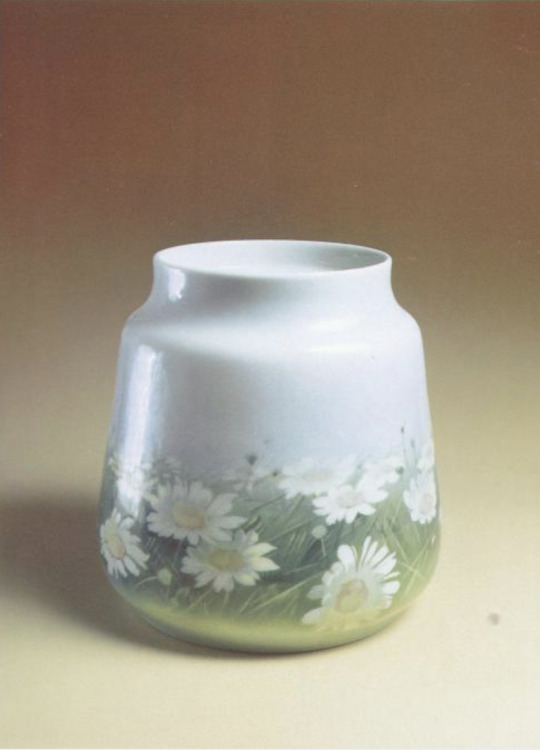
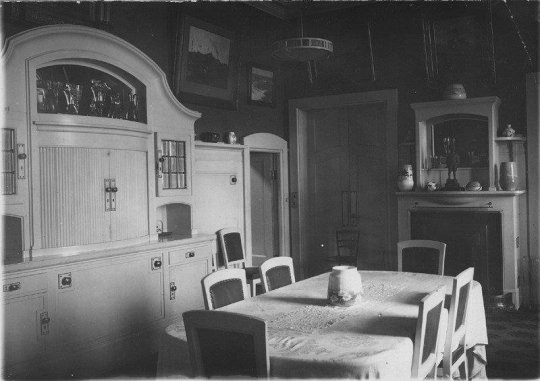
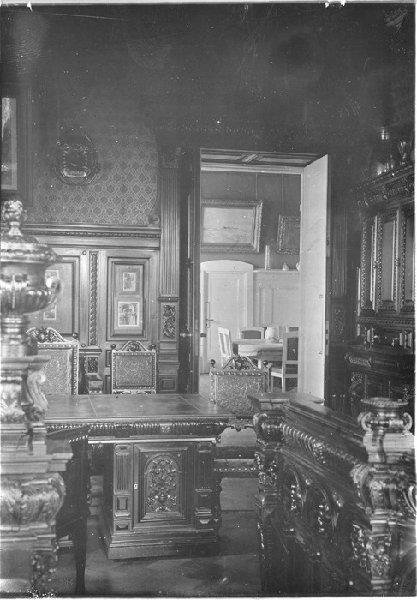
The dining room at the Lower Dacha in Peterhof
The principle of unity of interior design was also noted in the dining room. A high paneled panel with a shelf above it, painted with white enamel, decorated the walls of the room. The panel was fitted with folding shelves, a two-tiered sideboard with mirrors in the niche and sliding doors in the center, hiding the lifting machine. The fireplace with mirrors was also paneled in white painted wood. In the center of the room was a sliding dining table, a buffet table with folding shelves.
The furniture was slightly rounded. The tables and chairs were also upholstered in blue and blue shagreen leather, the floor was covered with a plush greenish-blue carpet with dark blue medallions, and the windows were covered with light fawn curtains with dark fawn poppy flowers and green leaves. On the fireplace, in the niche and on the shelves - porcelain in the Art Nouveau style of Russian work, colored and transparent glass, crystal vases. In general, the decoration and decoration of the dining room resembled the cabins of the royal yacht "Standart".
The image of the "Standard" by N. D. Prokofiev, numerous photographs of the yacht, as well as seascapes by M. S. Tkachenko, I. V. Krachkovsky, Albert N. Benois decorated the walls of the room. There were also presented two sketches by Ilya Repin for the paintings "The Marriage of Nicholas II and Alice of Hesse" and "Cossacks Write a letter to the Turkish Sultan". {x}
39 notes
·
View notes
Text


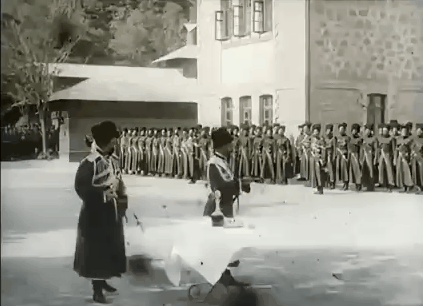


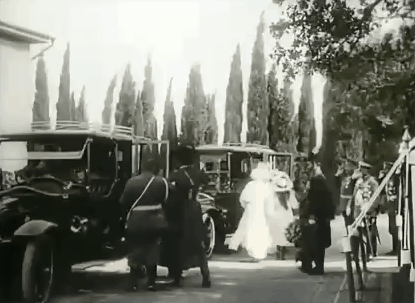


The Romanovs in Livadia
October 4, 1909. Feast of His Majesty's Convoy in Livadia. Emperor Nicholas II, accompanied by the commander of the Convoy, Major General Prince George Ivanovich Trubetskoy (1866-1926), Baron V.B. Fredericks and other ranks bypass the Cossacks in front of the Convoy barracks. Parade of the Convoy ranks. The sovereign raises a glass of wine in front of the formation and greets the Convoy, saying: "Brothers, thank you for the glorious parade!"
October 4, 1913. Feast of His Majesty's Own Convoy in Livadia. In front of the Convoy barracks, the Empress and the Sovereign get into the car, a Cossack carries the sick Tsesarevich Alexei in his arms and helps him get in a Renault 40HP. Grand Duchesses Olga, Tatiana, Maria and Anastasia leave in a Rolls-Royce 40/50HP limousine. [Full video]
45 notes
·
View notes
Text
My book of prince Vladimir Paley poems, original edition from 1916
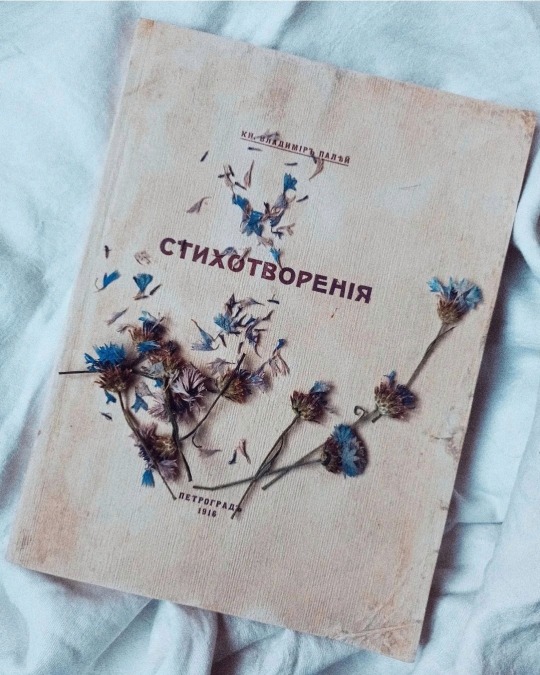
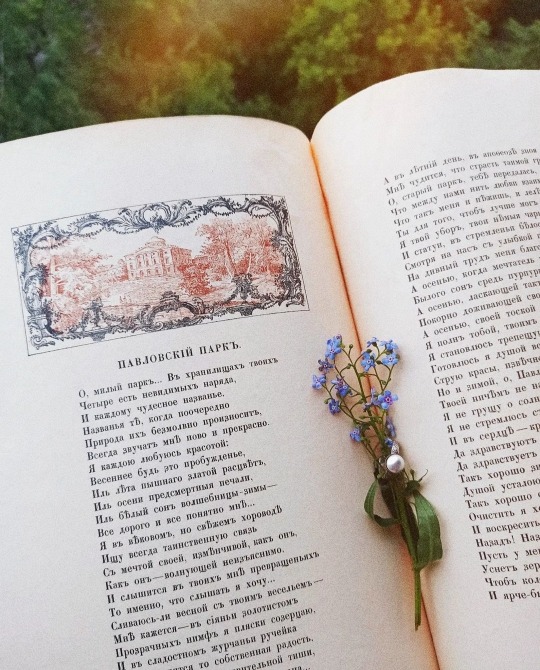
63 notes
·
View notes